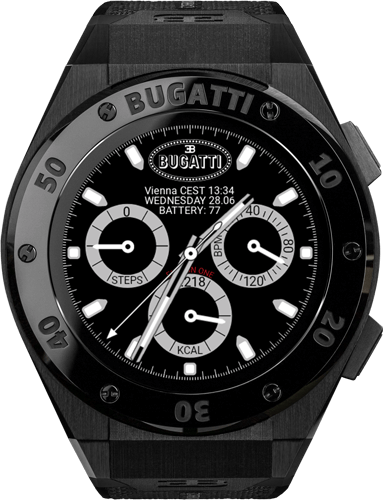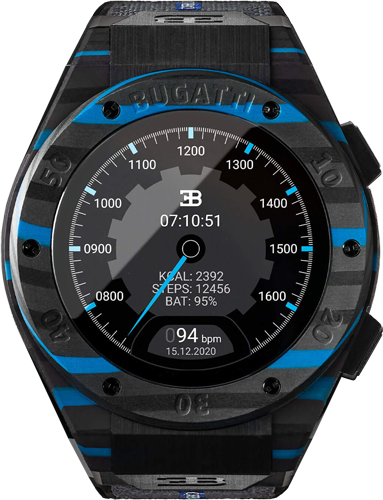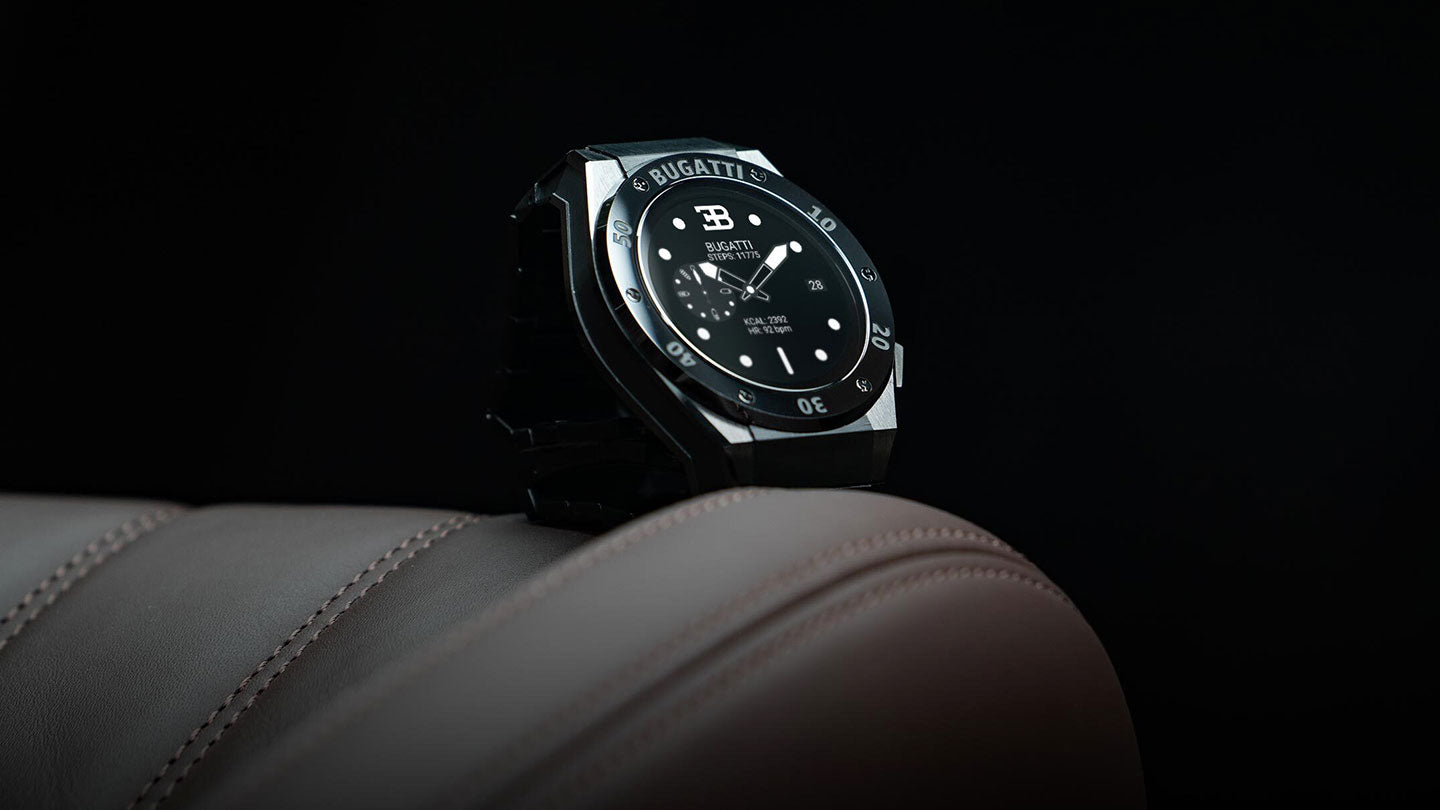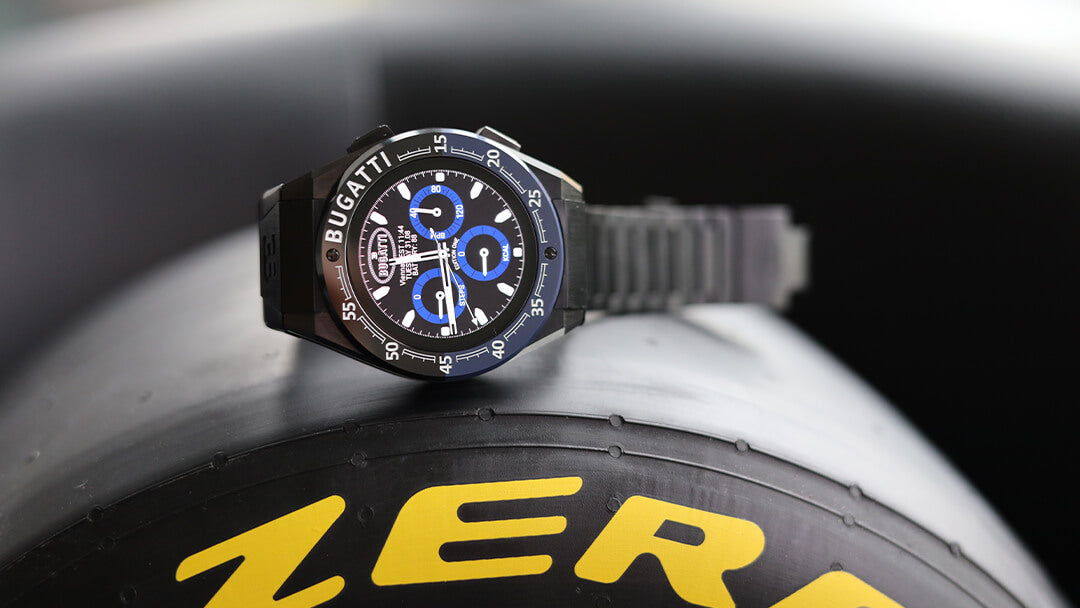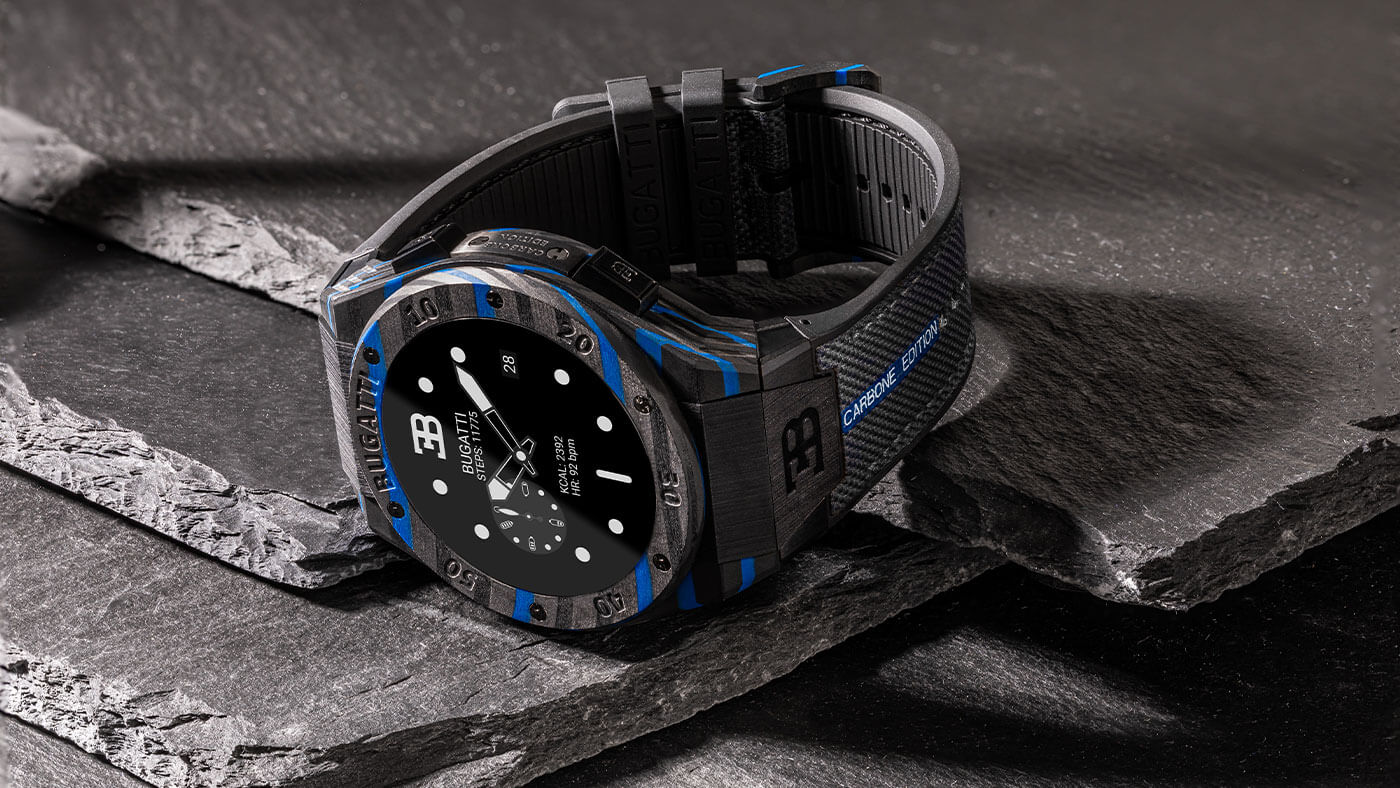Watches in the price segment below $300 often rely on mineral glass. Premium watches almost always use sapphire crystal. What is the difference and what advantages does sapphire crystal offer?
Sapphire crystal is one of the hardest materials in the world
Diamonds are just about the only material capable of scratching your Bugatti Smartwatch. When scratches are reported in sapphire crystal, it is because the abrasion of softer materials leaves slight marks. However, these can be easily removed with a standard eraser or a soft toothbrush and warm water. We have never had a customer complaint about a scratched display.
Mineral glass scratches easily
The other glass material frequently used in watches is mineral glass. It scratches easily, but is much cheaper to produce. It is often used for fashion watches under 300€. Unfortunately, it is often responsible for sad faces – namely when you bump up against a door or something else with your new watch and immediately get a scratch all over the glass.
How do I recognize sapphire crystal?
If a watch relies on sapphire crystal, then this will definitely be stated in the product text. Sapphire crystal is the type of glass that all premium watch manufacturers use for their most expensive watches. The production is very complex since one of the hardest materials on our planet has to be processed. For this, you are rewarded with a scratch-free watch life.
But there is another way to easily tell if it is sapphire crystal. All you have to do is put a drop of water on your watch. If it melts, it is mineral glass. If it holds its shape, you have a sapphire crystal watch in front of you.
Does sapphire crystal have to be anti-reflective?
A disadvantage of sapphire crystal is that it causes a reflection. But this doesn’t matter for Smartwatches with a fully digital display. There is no distance between glass and display (dial), unlike with analog watches, so there is no reflection. This does not cause any reflection. In addition, Smartwatches with a fully digital display are illuminated from behind, which again counteracts possible reflection. An anti-reflective coating makes the sapphire crystal more scratch-prone: the sapphire crystal itself will not scratch, but the coating will. Therefore, in the interests of product quality, an anti-reflective coating should be avoided where possible.
